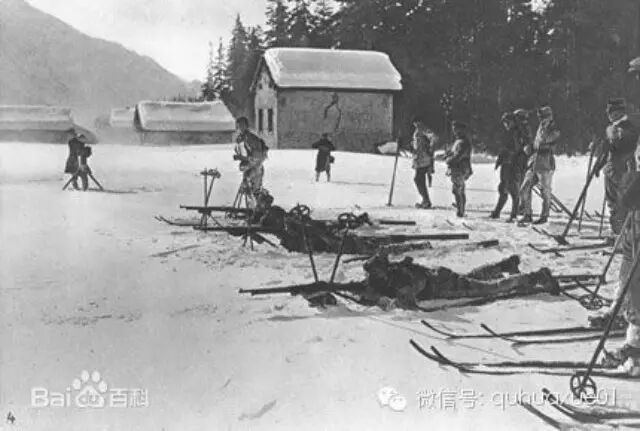The First Winter Olympics | Chamonix 1924


The 1st Winter Olympics
Competition dates: January 25 to February 5, 1924.
Participating countries and regions: 16.
Number of athletes: 258, including 13 female athletes.
Competition events: 4 major categories (14 sub-categories), with 2 demonstration events.
Host City: Chamonix. Located in the Haute-Savoie department in eastern France, Chamonix is a charming small town nestled near the borders of Switzerland and Italy, at the foot of Mont Blanc in the Alps. Situated approximately 1,037 meters above sea level, Chamonix enjoys relatively cool temperatures, with long winters and short summers. It’s renowned as a prestigious French health resort and a premier winter sports hub—back then, it was Europe’s largest skiing destination. The city boasts Europe’s tallest ski jump, along with exceptional cross-country skiing trails, as well as an indoor ice rink perfect for hosting ice hockey and figure skating competitions.
The 1908 London Olympics marked the first time figure skating was included in the Games, sparking tremendous public interest. By 1920, the Antwerp Olympics not only featured figure skating but also added ice hockey, drawing tens of thousands of ice sports enthusiasts to witness these thrilling events.
Although winter sports had already gained widespread popularity in several European and North American countries by the early 20th century—and since the inaugural Nordic Games held in Scandinavia in 1901, these icy competitions had begun to establish a cherished tradition—there were no truly global winter sports championships at the time.
In 1921, during the International Amateur Athletic Association’s congress in Lausanne, the idea of holding a separate Winter Olympics was formally put on the agenda, accompanied by detailed proposals. The following year, at the International Olympic Committee’s meeting in Paris, it was decided that such a competition would be staged ahead of the 1924 Summer Olympics—but crucially, the event avoided using the word "Olympics" altogether, instead being dubbed the "VIII Olympic Winter Sports Week."
Germany, as the host nation for the VIII Olympics, was entrusted by the IOC with organizing this groundbreaking event, which ultimately took place in Chamonix. In 1925, the IOC officially resolved to hold the Winter Olympics every four years, coinciding with the Summer Games, and designated this inaugural event as the "First Winter Olympic Games."
Chamonix is a small town in France, perched at an elevation of 1,050 meters just north of Mont Blanc. It serves as the perfect starting point for climbers aiming to conquer Europe’s highest peak, Mont Blanc (4,807 meters). With its notably longer and milder winters compared to other regions, Chamonix has become a renowned destination in France for both health-focused retreats and winter sports—drawing tens of thousands of visitors each year who come to explore its breathtaking landscapes and enjoy activities like skiing, snowboarding, and ice climbing.
Despite its modest population of just over 7,400 residents, Chamonix boasts fully equipped tourist infrastructure, featuring an impressive array of hotels and lodges, along with modern amenities such as supermarkets and vibrant entertainment venues. Access to the town is also exceptionally convenient, thanks to the world’s highest mountain cable car. Moreover, Chamonix made history by constructing a dedicated ice rink specifically for the Winter Olympics, providing the perfect setting for thrilling ice skating and hockey competitions.
(1) Not the first of its kind
Winter sports first gained popularity in the Nordic countries. According to historical records, figure skating was founded in 1642 in Edinburgh, Scotland, and by 1802, Finland already hosted organized ice-skating competitions. In 1823, Britain pioneered speed skating, and by the 1850s, ice skating had become a widespread winter sport across Europe. In 1901, the Scandinavian nations held the first Nordic Games, which soon became a cherished tradition—though the event eventually ceased in 1926. By the time the International Skating Union was established in Finland in 1892, it already boasted 32 member nations, including the United States and Canada. This early international organization underscores how ice skating had evolved into a truly global sport long before the Olympic Games were even conceived.
Coubertin had long envisioned holding the Winter Olympics as a standalone event, and the International Olympic Committee had even discussed the idea. However, Coubertin’s proposal faced fierce opposition from the Scandinavian nations. Representatives from countries like Sweden and Norway argued that, since the traditional Nordic Games already existed, there was no need for a parallel Winter Olympics—especially since the ancient Olympic Games never included winter sports. These nations warned that if the IOC pushed ahead with hosting a Winter Olympics, they would refuse to participate.
Needless to say, without the involvement of ice-and-snow powerhouses like Sweden and Norway—countries where winter sports are not only widely practiced but also excel in them—the Winter Games would have lost their very essence and, consequently, any real appeal to the public. As a result, the idea of holding a separate Winter Olympics was put on hold for some time.
The 1908 London Olympics marked the first time figure skating was included as an official event, drawing 24 athletes—21 men and 3 women—from seven countries to compete at London’s newly constructed artificial ice rink, sparking widespread public interest. At that time, Austria had already established a renowned figure-skating school in Vienna, nurturing many talented skaters. By the 1920 Antwerp Olympics, not only figure skating but also ice hockey had been added to the program. While attendance for most Olympic events remained modest, figure skating and ice hockey stood out, attracting tens of thousands of enthusiastic spectators eager to witness these thrilling winter sports. This overwhelming popularity clearly demonstrated the public’s deep affection for these disciplines, reigniting discussions about holding a separate Winter Olympics.
In 1921, during the International Amateur Athletic Federation’s meeting in Prague, representatives from Norway, Sweden, Switzerland, France, Canada, and other nations convened to deliberate on the idea of a Winter Olympics and presented detailed proposals. At the following year’s International Olympic Committee (IOC) session in Paris in 1922, Pierre de Coubertin tirelessly worked to persuade skeptics, ultimately securing approval. As a result, it was decided that such competitions would be held prior to the 1924 Summer Olympics—though the term “Olympics” itself was deliberately avoided. Instead, the event was officially dubbed the "8th Olympiad of Winter Sports Week."
France, as the host nation of the 1924 Games, was entrusted by the IOC with organizing this groundbreaking Winter Sports Week, which ultimately took place in Chamonix.
Chamonix is a small town in France, renowned as a popular health resort and winter sports hub—and at the time, it boasted Europe’s largest ski area. For this event, France specially constructed an ice rink tailored for both skiing and ice hockey competitions. Thanks to the success of the games, the International Olympic Committee officially recognized the event’s results and records as part of the 8th Olympic Games during its 24th annual session held in Prague, Czechoslovakia, in 1925. However, due to a clerical oversight, the meeting minutes mistakenly listed it as the very first Winter Olympics. It wasn’t until later that the IOC retroactively acknowledged it as the inaugural Winter Games. At the same time, the committee also decided to hold the Winter Olympics every four years thereafter.
(II) Against All Expectations
This year’s Winter Sports Week features Norway, a country known for its high level of expertise in winter sports, along with 15 other nations and regions: Finland, Sweden, Austria, Switzerland, Canada, the United States, France, as well as Italy, the United Kingdom, Czechoslovakia, Belgium, Hungary, Poland, Latvia, and Yugoslavia—countries that may not have strong medal hopes but are nonetheless deeply interested in the competition. Together, these 16 countries and regions are sending a total of 258 athletes to compete across four major disciplines, encompassing 14 individual events: 18km and 50km cross-country skiing, ski jumping, biathlon (combining 18km cross-country skiing with ski jumping), speed skating events over distances of 500m, 1,500m, 5,000m, and 10,000m, the all-around speed skating competition (determining the overall champion), men’s and women’s singles and pairs figure skating, four-man bobsleigh, and ice hockey. Additionally, there are two demonstration events: military patrol (featuring skiing combined with shooting) and curling.
It’s truly surprising how many countries and athletes have come together for this event, which boasts such an extensive lineup of competitions. Compared to the inaugural modern Olympic Games in 1896—where just 13 nations and regions gathered with a total of 245 athletes—this year’s Winter Sports Week has already achieved a remarkable level of international participation and appeal.
The opening ceremony of this Winter Sports Week was presided over by France’s Minister of Education, Gaston Vidal. Following Olympic tradition, the 16 participating teams entered the venue in French alphabetical order—Austria leading the way, with the host nation France bringing up the rear. During the athletes’ oath-taking, each team sent a representative to recite the pledge aloud. Little did any of the competitors know at the time that this event would go down in history as the very first Winter Olympics ever held.
The first Winter Olympic Games were held from January 25 to February 5, 1924, in Chamonix, France.
The 1908 London Olympics marked the first time figure skating was included in the Games, sparking tremendous public interest. By 1920, the Antwerp Olympics not only featured figure skating but also added ice hockey, drawing tens of thousands of ice sports enthusiasts to witness these thrilling events.
Although winter sports had already gained widespread popularity in several European and North American countries by the early 20th century—and since the inaugural Nordic Games held in Scandinavia in 1901, these icy competitions had begun to establish a cherished tradition—there were no truly global winter sports championships at the time.
In 1921, during the International Amateur Athletic Association’s congress in Lausanne, the idea of holding a separate Winter Olympics was formally put on the agenda, accompanied by detailed proposals. The following year, at the International Olympic Committee’s meeting in Paris, it was decided that such a competition would be staged ahead of the 1924 Summer Olympics—but crucially, the event avoided using the word "Olympics" altogether, instead being dubbed the "VIII Olympic Winter Sports Week."
Germany, as the host nation for the VIII Olympics, was entrusted by the IOC with organizing this groundbreaking event, which ultimately took place in Chamonix. In 1925, the IOC officially resolved to hold the Winter Olympics every four years, coinciding with the Summer Games, and designated this inaugural event as the "First Winter Olympic Games."
The first Winter Olympics featured participation from Norway, Finland, Sweden, Switzerland, Austria, the United States, Canada, and Germany—plus 16 other nations with strong interest in the games: the United Kingdom, Italy, Belgium, the former Czechoslovakia, Latvia, Hungary, the former Yugoslavia, and Poland. A total of 293 athletes competed, including 13 female athletes. In essence, this event was still very much an European and North American showcase of winter sports.
The competition events include skiing, four-man bobsleigh, men's speed skating, and ice hockey. Skiing events feature 18-km and 50-km cross-country skiing, ski jumping, biathlon, and military patrol; men's speed skating includes the 500m, 1500m, 5000m, 10,000m, and all-around events; while figure skating encompasses men's singles, women's singles, and pairs events.
On January 25, the inaugural Winter Olympics officially kicked off, with Germany’s Education Minister Gaston Vidal presiding over the opening ceremony. Teams marched into the stadium in alphabetical order by French names—Austria led the procession, while the host nation brought up the rear. Athletes’ oaths were recited by a representative chosen from each team.
The first Winter Olympics champion was American speed skater Charles Jewtraw, who triumphed in the 500-meter race with a time of 44 seconds. In doing so, the United States claimed the very first gold medals awarded at both the Summer and Winter Games. Meanwhile, Finland swept the remaining four speed skating golds at these Winter Olympics: Klæbo Dæhlie alone won three gold medals—across the 1,500m, 5,000m, and all-around events—plus a silver in the 10,000m, making him the standout athlete of the Games.
Austria, long renowned as a powerhouse in figure skating, sent its finest athletes to compete. While Sweden’s Gillis Grafström narrowly claimed the men’s singles title, Austria emerged victorious in both the women’s singles and pairs events. The women’s singles crown was easily secured by two-time world champion Herma Plank-Szabo, while Heidi Engelman and Otto Berger stunned the legendary Finnish duo—1911 and 1920 Olympic gold medalists Jakobson—and clinched gold alongside Germany’s celebrated pair, Anna Jörg and Paul Busch.
Skiing events have seen a clear dominance from Nordic nations. In the four disciplines—18-km race, 50-km race, ski jumping, and biathlon—Norway swept all 12 medals, with Finland’s Teemu Niku claiming one bronze in the 18-km race. Notably, 29-year-old star Tor Arne Haug captured three of Norway’s four gold medals, along with a single bronze. Following Chamonix, he went on to clinch the prestigious 50-km title at the Holmenkollen Ski Festival, earning him the title "King of Skiing." To honor his legendary career, Norway has erected a monument dedicated to this iconic skier right in his hometown.
Sledding has been practiced in several countries since the last century, which is why the host nation included this event in the competition. However, participation was limited due to uneven skill levels, prompting more established nations to send two teams each. This year’s competition featured just one men’s four-man event, and all six teams that advanced to the finals hailed from Europe—ultimately, Switzerland’s No. 1 team claimed the gold medal.
Canada and the United States clearly dominated in ice hockey. In the preliminary rounds, Canada defeated former Czechoslovakia 30–0, Sweden 22–0, and Switzerland 33–0; meanwhile, the U.S. routed Great Britain 11–0, Belgium 19–0, and Germany 22–0. Judging from the scores, the gap between European and North American teams at the time was remarkably wide. Ultimately, in the final match, Canada clinched the gold medal by defeating the U.S. team 6–1.
This year's Winter Olympics featured 14 individual events. Norway claimed 4 gold medals, along with 7 silver and 7 bronze medals, placing them second overall. Finland, in second place, matched Norway’s gold medal count but fell short in both silver and bronze, earning 3 of each. Austria secured 2 golds and 1 silver, finishing just behind Norway and Finland. The remaining 4 gold medals were evenly split among the United States, Switzerland, Sweden, and Canada.
Medal distribution at the first Winter Olympics:
Countries and Regions That Won Medals at the First Winter Olympics
Gold medals, Silver medals, Bronze medals, Total medals
Norway 4 7 6 17
Finland 4 3 3 10
Austria 2 1 0 3
United States 1 2 1 4
Switzerland 1 0 1 2
Canada 1 0 0 1
Sweden 1 0 0 1
UK 0 1 2 3
Belgium 0 0 1 1
France 0 0 1 1



![[Event] Enjoy a Free Trial of Indoor Skiing Fun—Limited Spots Available (Snowboard)](https://api.zsiga.xyz/mp-weixin-attachment/cover/19/400589296_1.jpg)